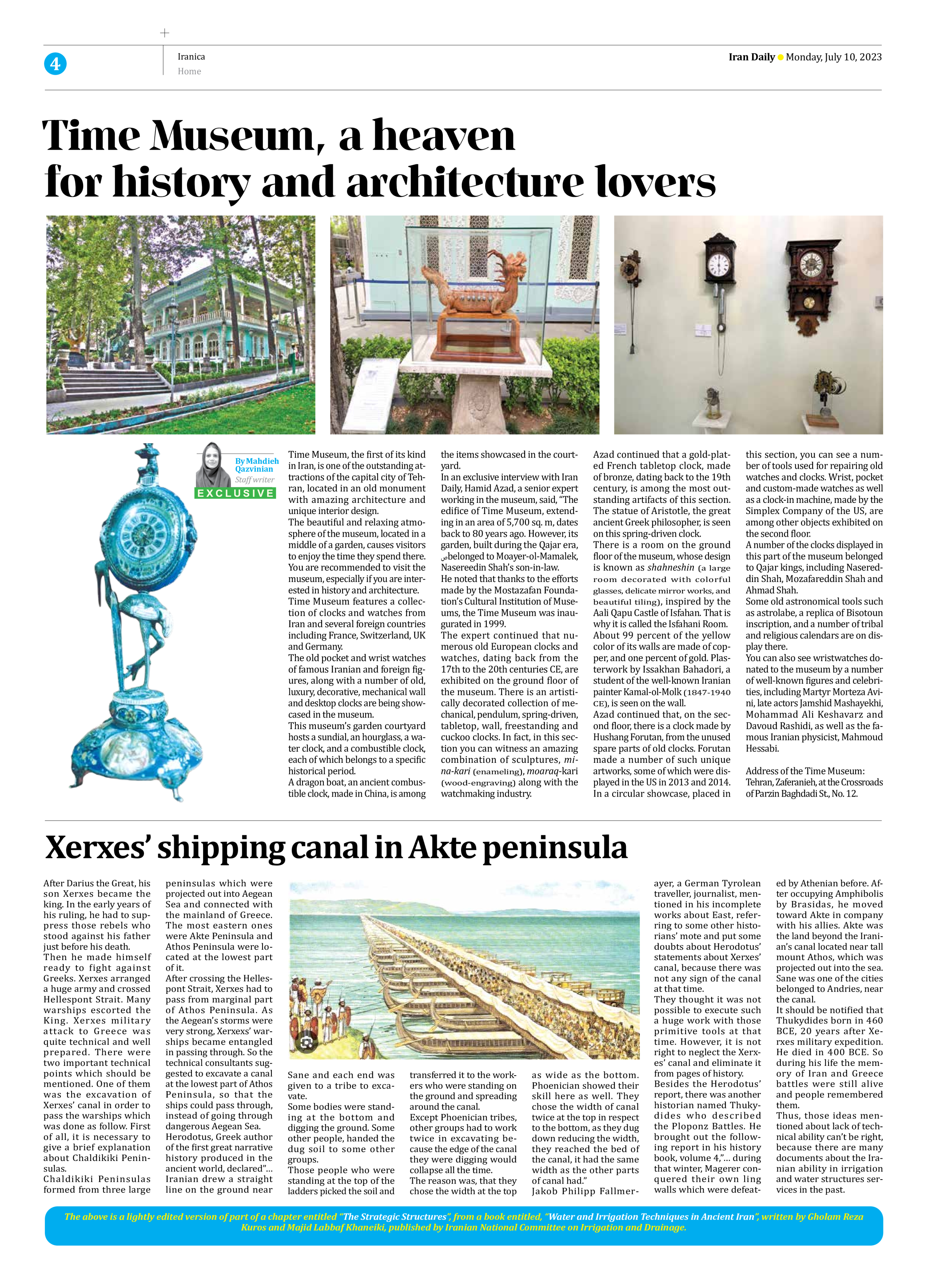
Xerxes’ shipping canal in Akte peninsula
After Darius the Great, his son Xerxes became the king. In the early years of his ruling, he had to suppress those rebels who stood against his father just before his death.
Then he made himself ready to fight against Greeks. Xerxes arranged a huge army and crossed Hellespont Strait. Many warships escorted the King. Xerxes military attack to Greece was quite technical and well prepared. There were two important technical points which should be mentioned. One of them was the excavation of Xerxes’ canal in order to pass the warships which was done as follow. First of all, it is necessary to give a brief explanation about Chaldikiki Peninsulas.
Chaldikiki Peninsulas formed from three large peninsulas which were projected out into Aegean Sea and connected with the mainland of Greece. The most eastern ones were Akte Peninsula and Athos Peninsula were located at the lowest part of it.
After crossing the Hellespont Strait, Xerxes had to pass from marginal part of Athos Peninsula. As the Aegean’s storms were very strong, Xerxexs’ warships became entangled in passing through. So the technical consultants suggested to excavate a canal at the lowest part of Athos Peninsula, so that the ships could pass through, instead of going through dangerous Aegean Sea.
Herodotus, Greek author of the first great narrative history produced in the ancient world, declared”… Iranian drew a straight line on the ground near Sane and each end was given to a tribe to excavate.
Some bodies were standing at the bottom and digging the ground. Some other people, handed the dug soil to some other groups.
Those people who were standing at the top of the ladders picked the soil and transferred it to the workers who were standing on the ground and spreading around the canal.
Except Phoenician tribes, other groups had to work twice in excavating because the edge of the canal they were digging would collapse all the time.
The reason was, that they chose the width at the top as wide as the bottom. Phoenician showed their skill here as well. They chose the width of canal twice at the top in respect to the bottom, as they dug down reducing the width, they reached the bed of the canal, it had the same width as the other parts of canal had.”
Jakob Philipp Fallmerayer, a German Tyrolean traveller, journalist, mentioned in his incomplete works about East, referring to some other historians’ mote and put some doubts about Herodotus’ statements about Xerxes’ canal, because there was not any sign of the canal at that time.
They thought it was not possible to execute such a huge work with those primitive tools at that time. However, it is not right to neglect the Xerxes’ canal and eliminate it from pages of history.
Besides the Herodotus’ report, there was another historian named Thukydides who described the Ploponz Battles. He brought out the following report in his history book, volume 4,”… during that winter, Magerer conquered their own ling walls which were defeated by Athenian before. After occupying Amphibolis by Brasidas, he moved toward Akte in company with his allies. Akte was the land beyond the Iranian’s canal located near tall mount Athos, which was projected out into the sea. Sane was one of the cities belonged to Andries, near the canal.
It should be notified that Thukydides born in 460 BCE, 20 years after Xerxes military expedition. He died in 400 BCE. So during his life the memory of Iran and Greece battles were still alive and people remembered them.
Thus, those ideas mentioned about lack of technical ability can’t be right, because there are many documents about the Iranian ability in irrigation and water structures services in the past.
The above is a lightly edited version of part of a chapter entitled “The Strategic Structures”, from a book entitled, “Water and Irrigation Techniques in Ancient Iran”, written by Gholam Reza Kuros and Majid Labbaf Khaneiki, published by Iranian National Committee on Irrigation and Drainage.







